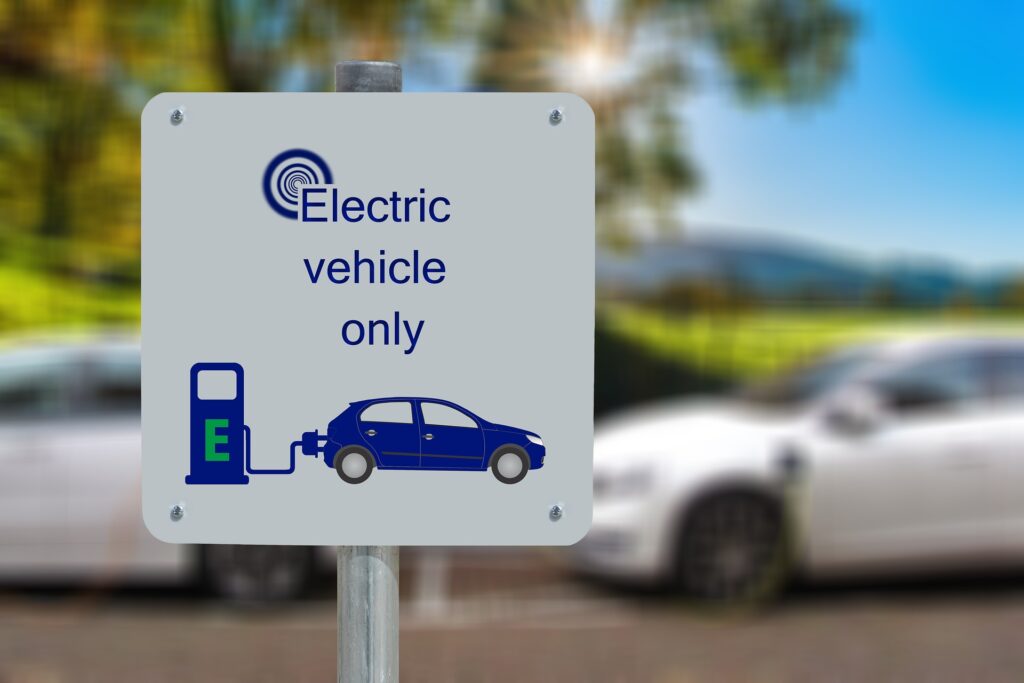The Electric Vehicle Transition
In 2019, the European Commission presented the European Green Deal, a package of initiatives covering all policy areas, with the goal of turning the EU into the world’s first climate-neutral area by 2050. One such initiative has been to regulate the amount of CO2 emitted by cars and vans, which accounted for 15% of Europe’s greenhouse gas emissions. To achieve this, the EU set out ambitious targets to decrease emissions in the coming years. These targets range from 55% and 50% for cars and vans, respectively, by 2030, and a decrease of 100% by 2035. Thus, automakers’ attention turned to the production of electric vehicles (EVs) to meet these objectives.
The automotive industry’s significance for Europe cannot be overstated, being one of the major industrial sectors on the continent. These days, it accounts for 7% of Europe’s GDP, over €1 trillion, and contributes 13.8 million jobs, directly and indirectly. Europe is a major player in the global automotive industry, producing close to 20% of the world’s vehicles. However, it has been struggling for the past few years. Sales declined between 2019 and 2022, and, while they recovered slightly in 2023, they have not reached pre-pandemic levels. It is well known that EU manufacturers have been lagging behind other competitors in the field of electrification. Despite the objective to switch over entirety to EVs by 2035, they still only made up 15% of the market share in November 2024, compared to 16.3% in the year prior. Two major factors have been highlighted behind this slowdown: weak competitiveness and stringent regulation.
Challenges Ahead
European automakers have struggled to remain competitive amongst growing industries in other parts of the world. The most significant of these has been China, which has increasingly dominated the EV industry. More and more European countries are now importing EVs from China, with the EU now being its largest overseas market. While Western companies have focused on expensive, luxury models, the Chinese have been manufacturing cheaper ones, with the average Chinese EV sold in Europe being around 20% cheaper than its European-produced equivalent. The consequence of this growing trade deficit will hurt the already struggling local manufacturers. Following an investigation into Chinese state aid towards its automakers, the EU imposed tariffs on various Chinese EV companies in 2024, added to the existing 10% tariff. That said, it is not clear whether these increased trade barriers will strengthen the competitiveness of European manufacturers. The tariffs will, however, make it more difficult for the EU to meet emission targets and will block low-income Europeans out of the market.
On the other hand, the European industry is facing stricter regulations regarding CO2 emissions. The EU’s annual penalties for failing to meet CO2 limits applied as a part of the European Green Deal are causing concern. This year, automakers are required to lower the average CO2 emitted by newly sold cars by 15%, to around 94 grams per kilometre. If unable to do so, they must pay a penalty, which some have estimated could cost the European automotive sector €15 billion, although others have put the overall penalties below €1 billion.
No Jobs on a Dead Planet
In light of these challenges, manufacturers and governments, alike, have been pushing for the rules to be relaxed, notably those of Italy, Germany and Czechia. The European Peoples Party (EPP), the largest group in the European Parliament, has also called for the initiative to be overturned. While the automotive industry’s slowdown is cause for concern, the response shouldn’t come at the cost of the green transition. For one, should the EU back down, it will result in regulatory uncertainty for businesses, which could in turn lead to funding being cut. More importantly, environmental measures are vital as the planet reaches the irreversible tipping point for climate impact. The social and economic problems occurring in the automotive industry will crop up in other industries affected by environmental regulations; therefore, the EU should be prepared to deal with the fallout while remaining committed to its green pledges.
This presents an opportunity for European automakers to innovate, which is necessary to remain competitive, regardless of regulations in place. It also highlights the importance of a robust EU industrial policy. Measures can include further funding for R&D into sustainable growth, as well as infrastructure development and securing the battery manufacturing value chain. The EU has already shown some progress in this area, such as providing €3 billion of public support to the development of a European battery industry. However, others, for instance, the expansion of charging stations, leave room for improvement. Additionally, the EU and national governments must be willing to provide incentives, in the form of grants, subsidies or tax breaks, to consumers and manufacturers if they aim to meet the 100% EV sales target by 2035. While the formation of a pan-EU incentives programme is already being discussed within the Commission, it remains to be seen whether this will materialize. Finally, the switch to EVs is expected to shift employment opportunities from combustion engine plants to zero-emission suppliers; therefore, training, job reallocation and social protection programmes will be necessary to ensure that no one is excluded from the green transition. Implementing the European Green Deal was never going to be an easy task, but the circumstances, now more than ever, call for forward-looking policies and strong action by the EU and national governments, alike.
Literature
Dahl, J., 5 things to know about Europe’s electric vehicle transition, POLITICO, 20 August 2024.
Euronews, Fact check: Is Europe’s car industry in crisis, 14 October 2024.
European Council, “‘Fit for 55’: Council adopts regulation on CO2 emissions for new cars and vans”, Press Release, 28 March 2023.
Henig, D and Lee-Makiyama, H., The Future of EU Leadership in the Car Industry: Still Global, European Centre for International Political Economy, December 2021.
Jolly, J., Car industry calls for shift in EU emissions targets amid slowing EV sales, The Guardian, 19 September 2024.
Mobility Portal, Can it recover?: EV sales drop in the EU in 2024, 23 December 2024.
T&E, Why the car industry will not pay €15 billion in penalties in 2025, Briefing, 11 December 2024.
Turner, A., EU exploring pan-European subsidies to boost electric vehicle demand, AM Online, 24 January 2025.
van Wieringen, K., The future of European electric vehicles, European Parliament, November 2024.
Wingender, P., Jiaxiong, Y., Zymek, R., Carton, B., Cerdeiro D. A., and Weber, A., “Europe’s Shift to EVs Amid Intensifying Global Competition”, IMF Working Papers 218, 2024.








